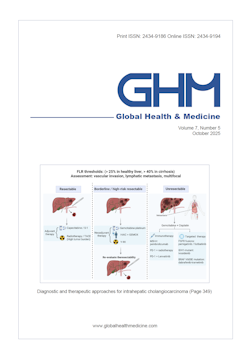Global Health & Medicine 2020;2(1):33-38.
Prevalence and incidence of HIV-1 infection in a community-based men who have sex with men (MSM) cohort in Ulaanbaatar, Mongolia
Takano M, Jagdagsuren D, Gombo E, Bat-Erdene B, Dorjgotov M, Galsanjamts N, Zayasaikhan S, Takaku M, Sugiyama M, Mizokami M, Ichikawa S, Oka S
The number of HIV-1-infected men who have sex with men (MSM) Mongolian patients started to increase steeply just before 2011. We started collaborative work with community-based organizations that promote safer sex and HIV testing for MSM since mid-2010. Since early 2013, the Mongolian Government has implemented the treat-all strategy for MSM. To determine the efficacy of these countermeasures, we established an MSM cohort in the capital of Mongolia, Ulaanbaatar, in December 2013. HIV antibody was examined at every visit by rapid test. Syphilis was also examined to monitor their sexual behavior. Clients positive for either rapid test were referred to the National Center for Communicable Diseases, Ulaanbaatar, to confirm the results and treatment. Since safer sex promotion is one of the purposes of this cohort, HIV-positive clients were also eligible to participate. A total of 849 MSM were registered and 2,409 HIV/syphilis tests were conducted until December 2017. During this period, 499 (58.8%) clients visited the testing sites repeatedly. Among the 849 clients, HIV-1 infection was confirmed in 83 at registration (prevalence of HIV- 1: 9.8%). One HIV-1 seroconverter was identified (from negative to positive), resulting in incidence of HIV-1 of 0.10/100 person-years (PY). Syphilis was positive in 144 cases at registration (syphilis prevalence: 17.0%), and 53 new syphilis infection cases were diagnosed during the same period, with an incidence of 5.66/100 PY. Despite the high prevalence of HIV-1, the incidence was very low. The results suggest that countermeasures for HIV-1 prevention seem effective in this cohort, however, we still need further strategies for syphilis control.
DOI: 10.35772/ghm.2019.01036







